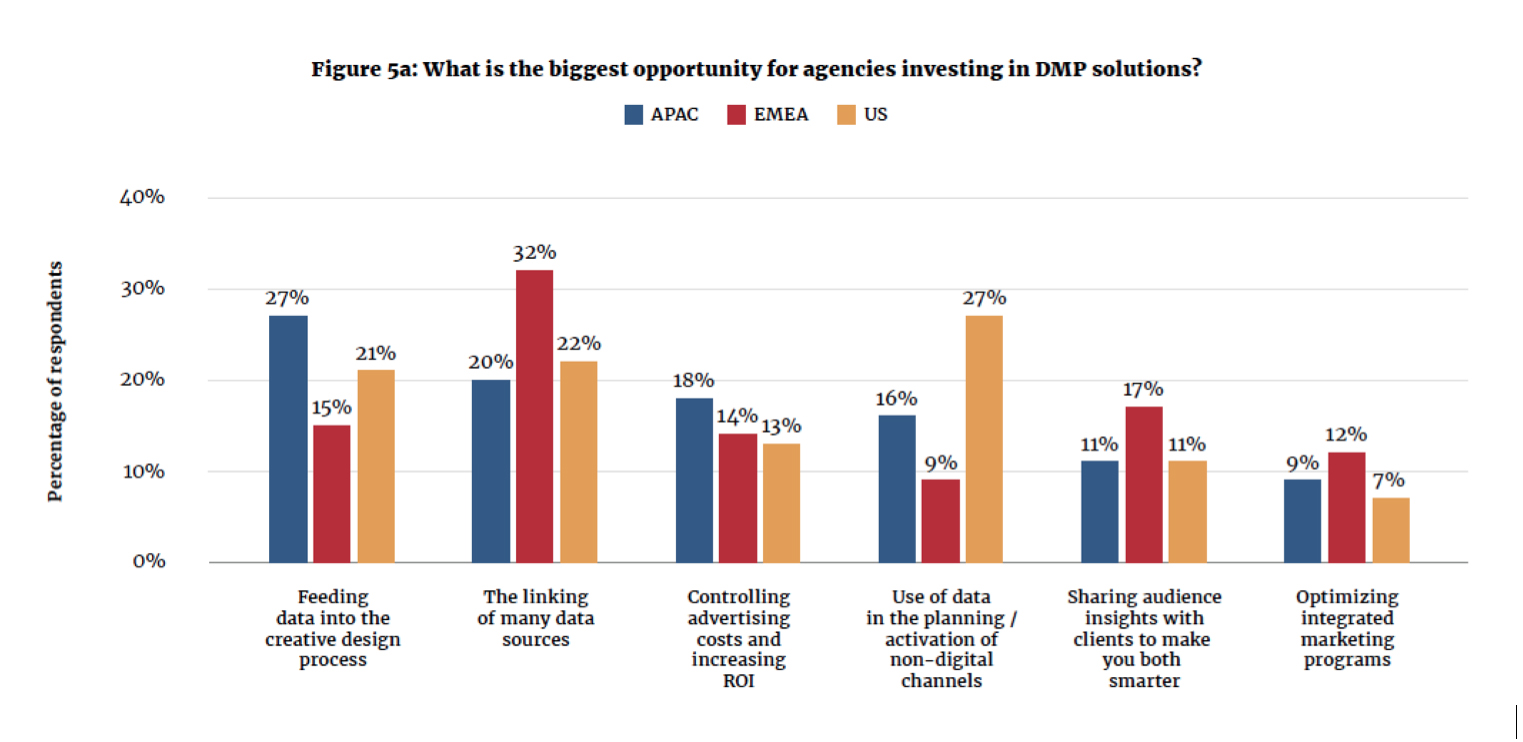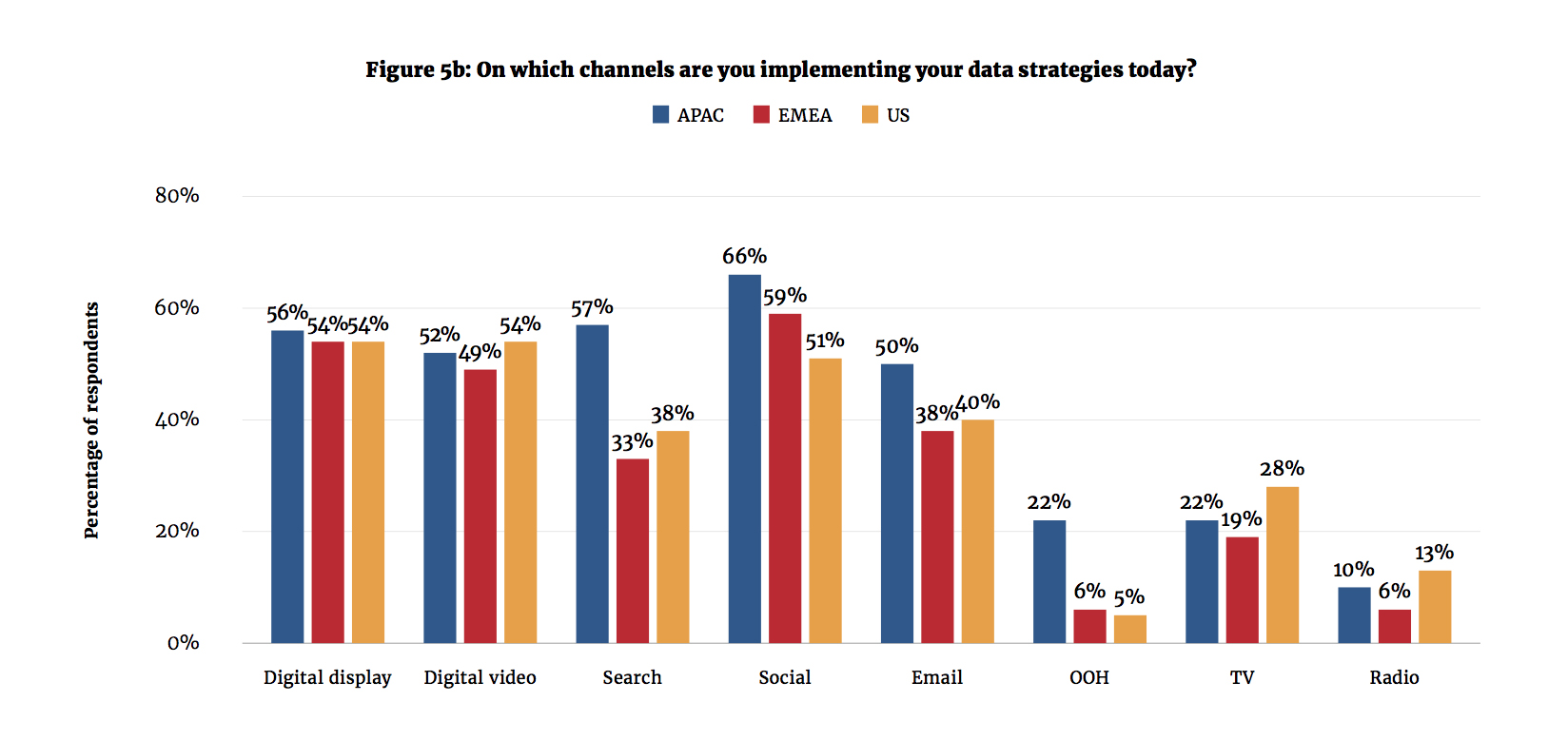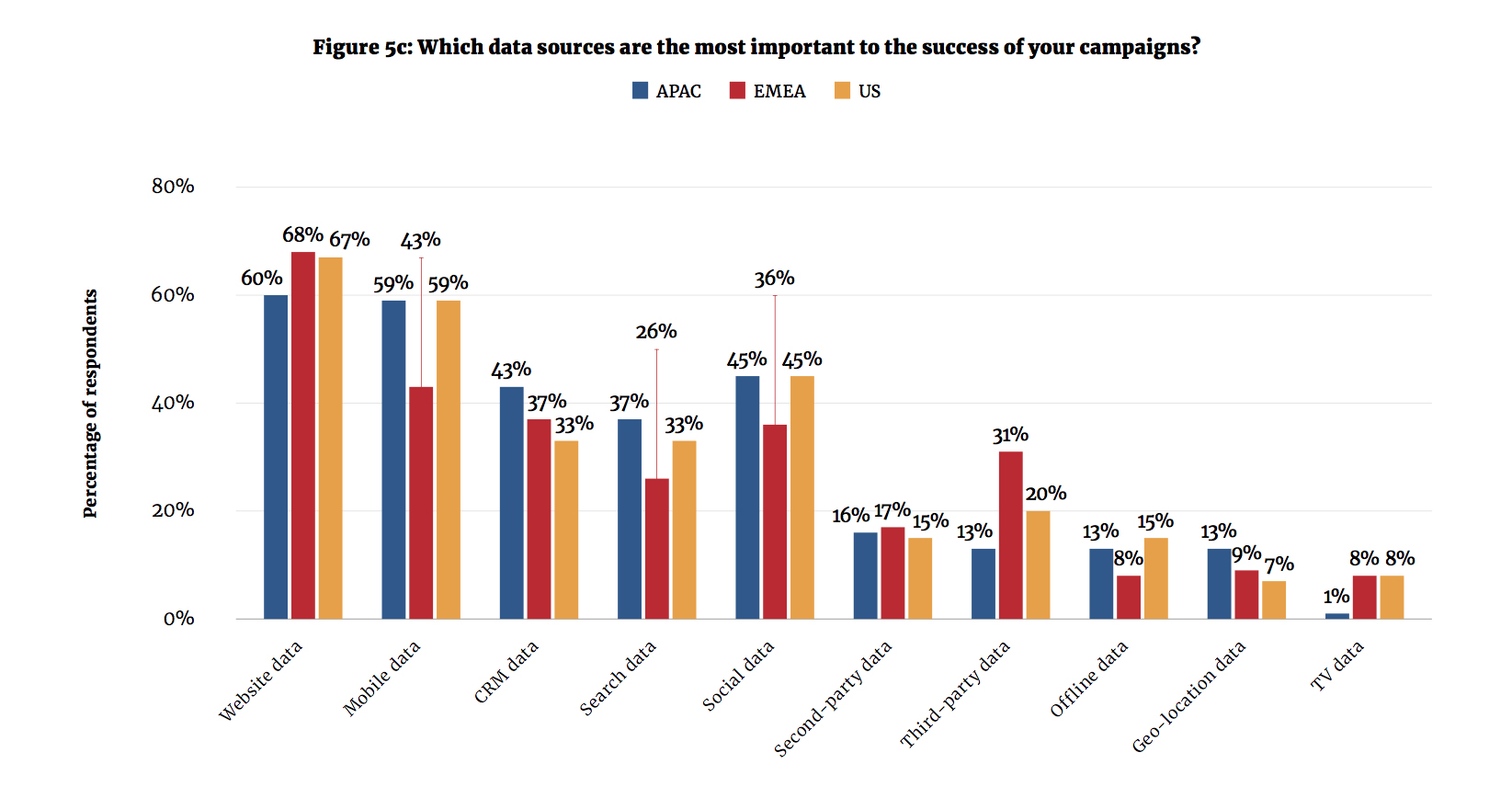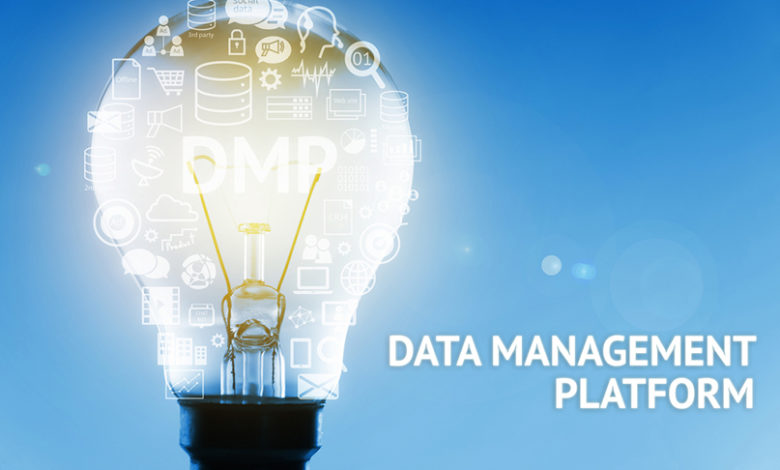From basic targeting to more refined insight gathering and knowledge sharing, how can agencies provide their clients with an advanced data strategy? A new, global report shows how media agencies are making the most of the capabilities of their DMPs – data management platforms – and highlights regional variations.
In a new report just published, ‘Adoption vs execution: How media agencies across the globe are making the most of their DMPs’ capabilities’, agency executives from around the world were surveyed to find out the extent to which data management platforms are being used beyond powering targeted advertising. The report aimed to uncover any regional variations in how agencies are using DMPs.
Overall, adoption has risen 49% in the last two years, with 79% of agency-side professionals now using DMPs. There is little regional variation in this DMP adoption (EMEA 76%; APAC 81%; US 80%). When asked what the primary use case for a DMP was, all three regions agreed that the top use cases were Audience Targeting and Audience Insights & Analytics.
However, that is where the similarities end among the regions. Where APAC agencies appear focused on feeding data into the creative design process, the US is most interested in using data in the activation of non-digital channels.
EMEA agencies identified the biggest opportunity for investing in a DMP as the linking of many data sources. For a market as varied as EMEA, with more than 40 countries and many different languages, unification of data is obviously important.
Agencies working with multiple clients (we can assume that means almost all agencies, as there are few that can exist with just one client alone) already have more than one data set to handle. With each client, there can be numerous data sources – online, offline, mobile, CRM, social and search are just the tip of the iceberg. In order to combine these data points into one holistic understanding of the customer, it makes sense that linking data is important to agencies.

Beyond data unification, EMEA agencies in this report identified the next two top use cases of a DMP as sharing insights with clients and optimising integrated marketing programs.
Advertising agencies are in the business of servicing their clients, and sharing insights on the target customer or any bit of knowledge that will help the marketing message go further, to reach more people at a lower price, is obviously what advertisers want.

When I first started working at an ad agency straight out of college, we were taught one important lesson early on – the customer comes first. The customer was not always right, but after losing or winning a new client, everyone could feel just how important the customers were. Without paying clients, the agency would not exist.
Everyone from the media planner (that was me at age 21) to the creative team to the account directors to the finance team understood that we had one purpose: to make our clients happy. We wanted to do a good job, represent them well and hope they continued paying their retainers for us to continue to help them. Without them, we would be out of a job. Such is the circle of life at an agency.
Times have changed since I first started working in advertising. In fact, when I was buying media, 90% of it was print advertising. There was one ‘crazy’ guy on the account management team who had to convince the CEO to let him learn what this new thing called ‘Google AdWords’ was so that we could offer our clients some sort of digital offering, to keep up with the times. No one expected that he would be the guy to predict the future – but it turns out he was right (he was also crazy, but that’s irrelevant).
Flash forward 20 years and the thought of a company in 2017 spending 90% of their ad buy in print is almost amusing. It’s all digital these days, no matter what size company you are.
Media planners today have an entirely different job, a new language and many different tools at their fingertips. Gone are the days of choosing one magazine to devote a large part of your ad spend to. Yes, you can still opt to choose one particular website and keep your ads there, or, if you’re like the rest of us, you can build an audience that mirrors your best customers and reach them wherever they are on the web. That is audience targeting 101 – define your audience and target ads only to those you want to reach. Minimise ad waste and hopefully increase campaign performance. This is what advertising technology such as a DMP is supposed to do.

The report found that agencies in the US are implementing their data strategy beyond digital channels (see Figure 5b) — especially TV (28%) and radio (13%) — more intensively than other regions. As such, they identified the planning and activation of non-digital channels as the best opportunity for their DMP (see figure 5a, top). To do this, they are routinely using website (67%) and mobile data (59%) within their DMP (see figure 5c). Given the huge amount of data available to agencies from website and mobile touch points, it is unsurprising to see offline data (15%) rank as less important than mobile or web sources.
Use of DMPs: from targeting to knowledge sharing
This basic definition of audience targeting, which is also the most basic use case of a data management platform, is obviously the first thing that comes to mind when agencies ask how they will use a DMP (as supported by the primary use case identified in this report by agencies around the globe). But for EMEA agencies, they appear to understand that same lesson I learned so long ago – the customer comes first – and it is up to them to serve their clients.
While marketers may think they know their target audience, or have a good idea of what an ideal customer looks like, agencies using a DMP can look at an audience profile report and share those insights directly with their client. This process of knowledge sharing not only makes both parties seem smarter, but it’s also customer service 101. In an industry where insights and information are keys to success, having a better understanding of what your customers want or are interested in or are more likely to click on is what marketers are looking for.
Agencies are now taking this knowledge even further and using these audience insights from the DMP to win new business. EMEA agencies who are sharing this inside information with their clients at any stage of the business cycle are more likely to be seen as a vital partner by the advertisers. For agencies that see a DMP as vital their business, 13% of those agencies include data strategy in their new business pitches over 85% of the time, compared with only 3% of agencies that view a DMP as “nice to have”.
Agencies are beginning to use DMPs for more localised, innovative purposes beyond data unification, audience targeting and analytics. EMEA agencies, in particular, have embraced the fact that impressing their clients with an advanced data strategy across platforms can lead to a leg-up on the competition. Like my crazy co-worker from 20 years ago, maybe these progressive agency folks are one step ahead of where we’ll all be in a few years.
To access the full report, click here.
Read also:
Improved data analysis is a question of re-tooling, not re-skilling
How focus on 5 key objectives based on business outcomes will deliver a robust RACI data management model









Leave your thoughts